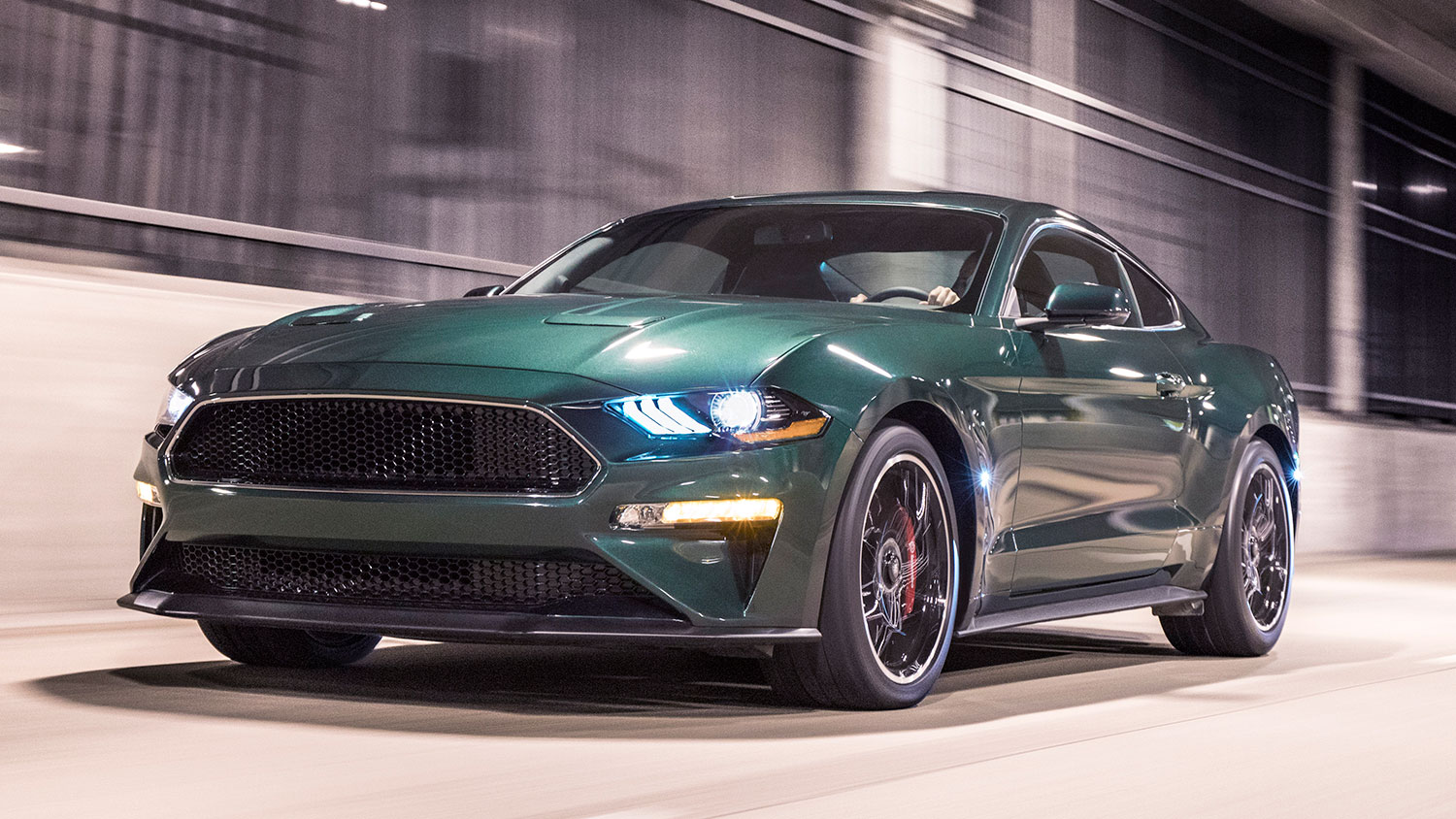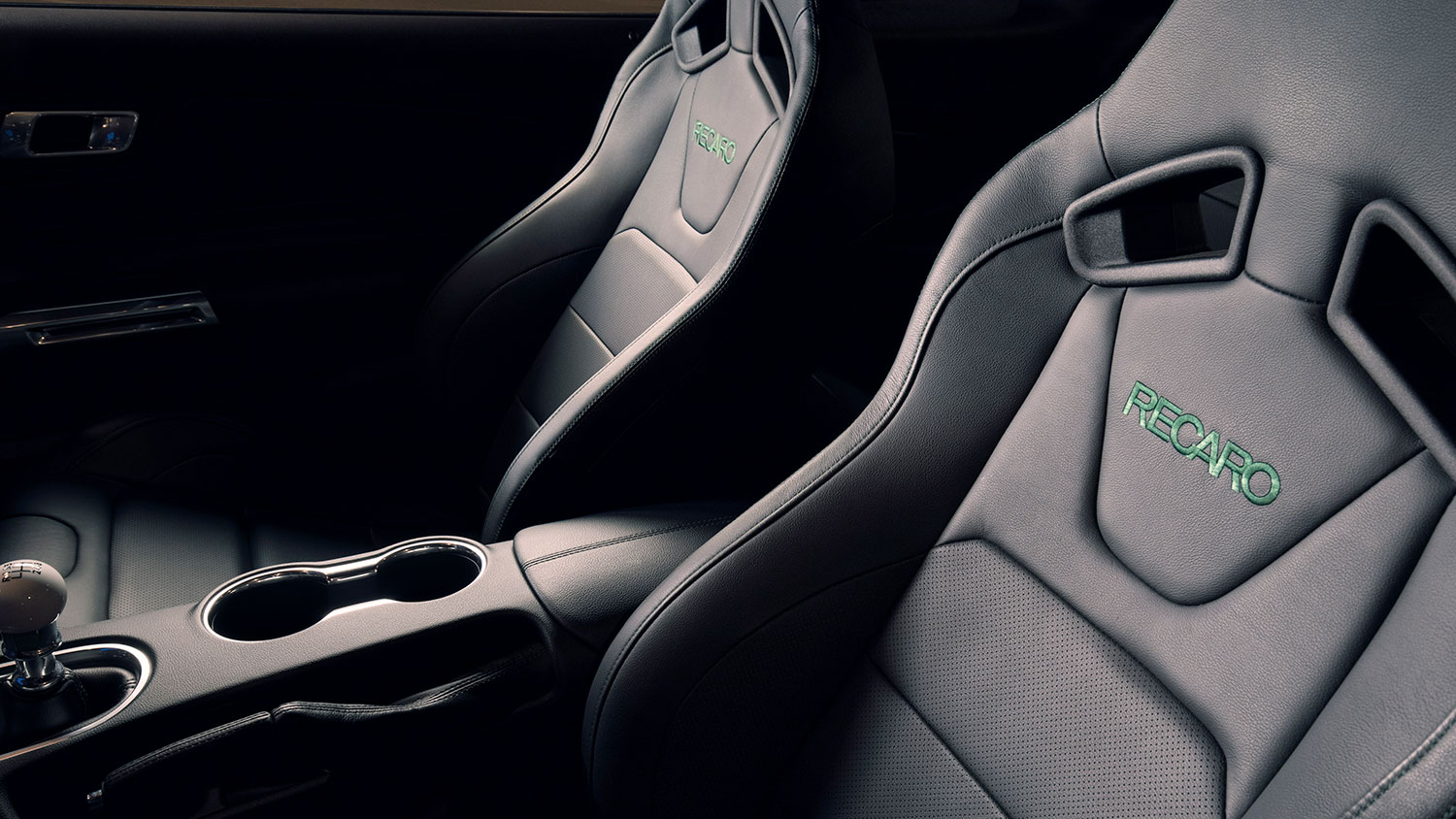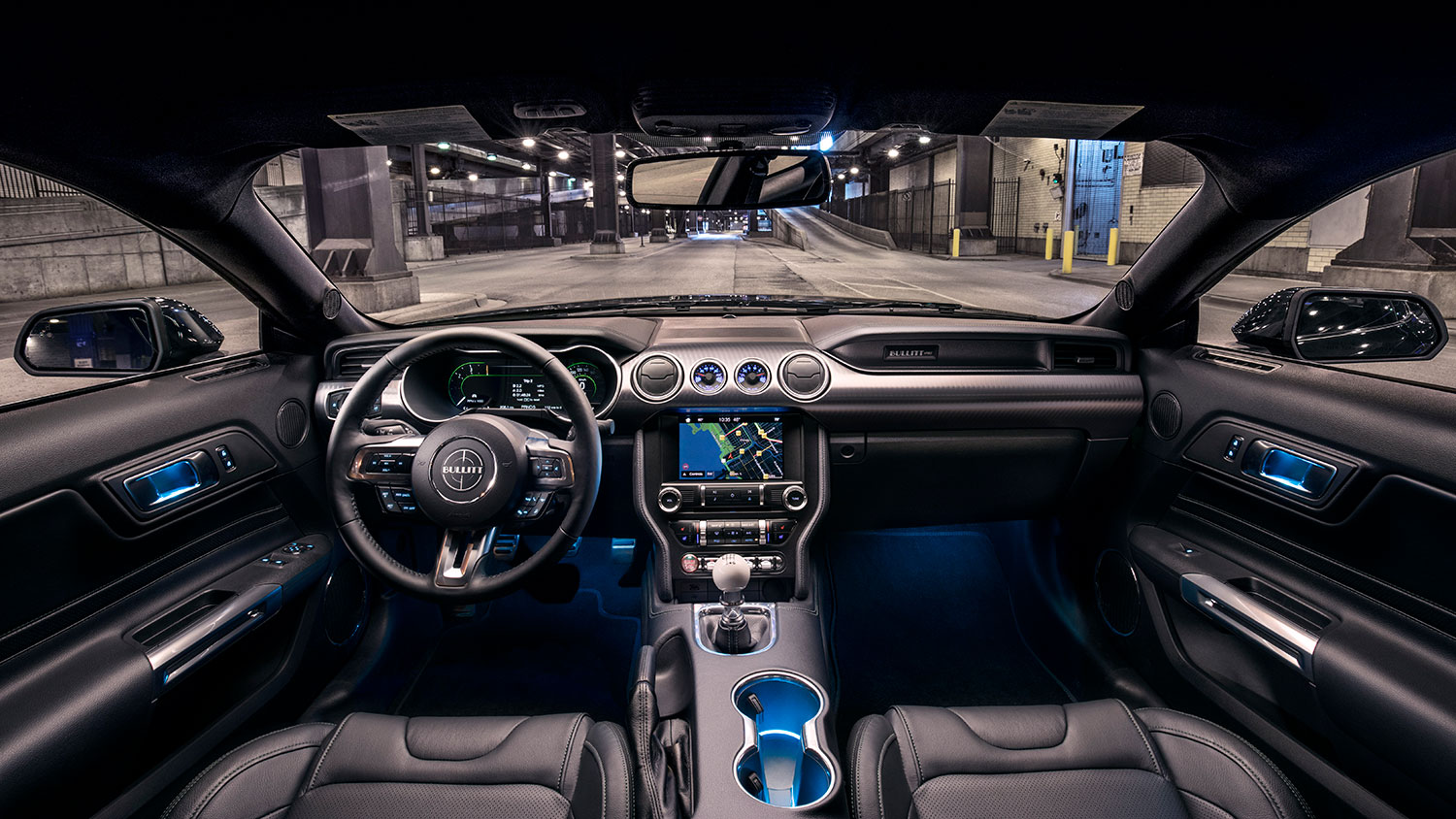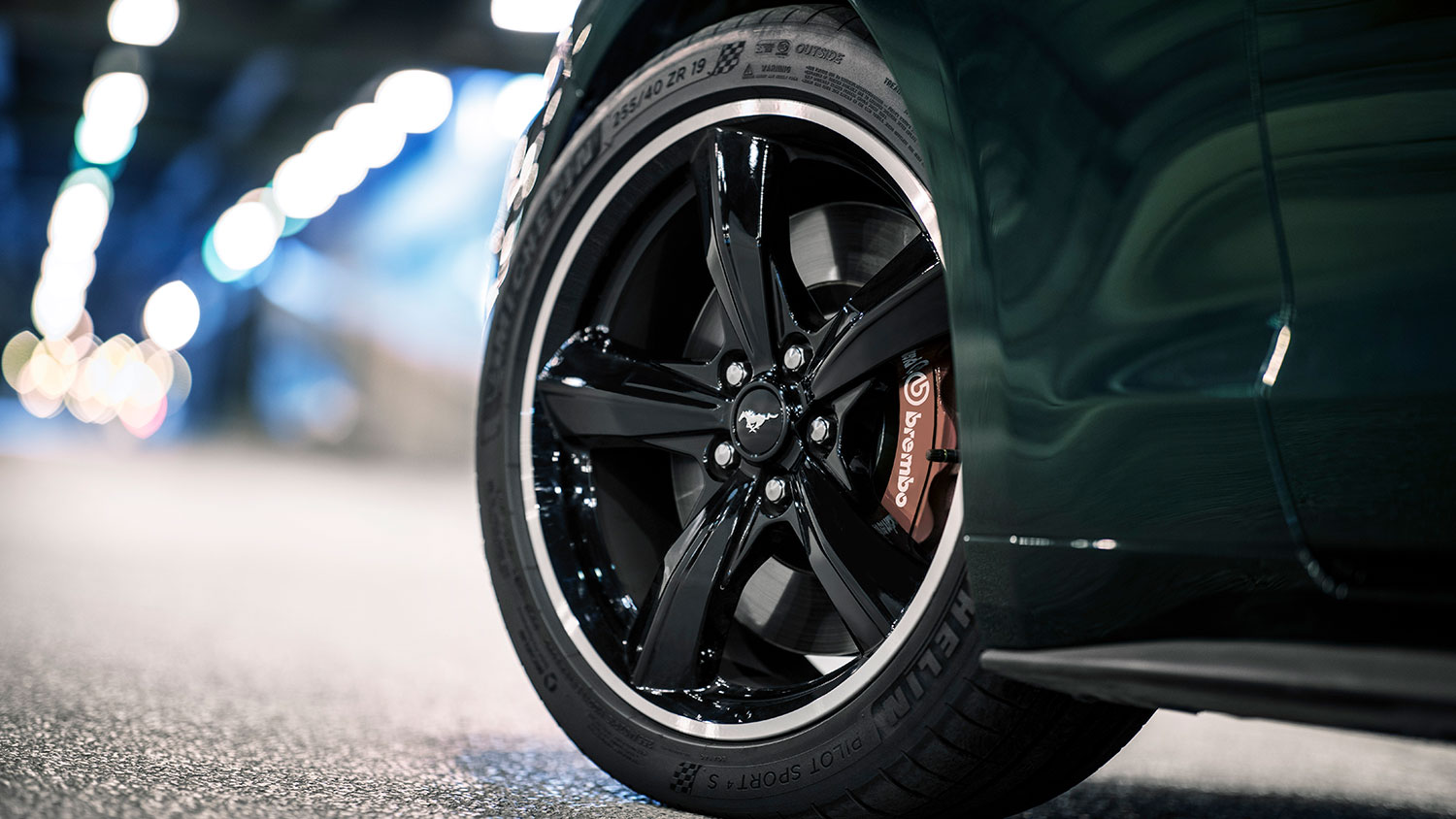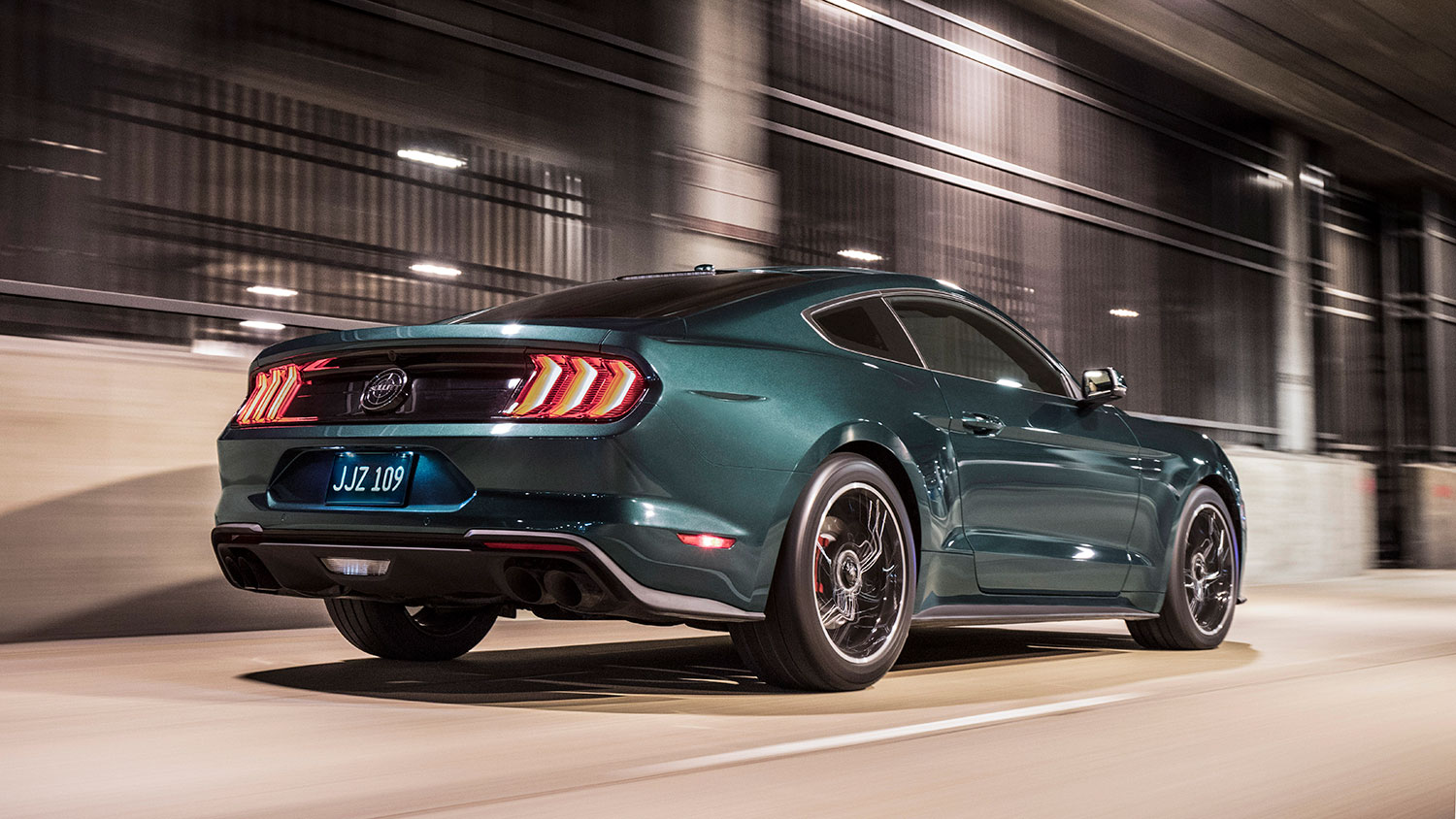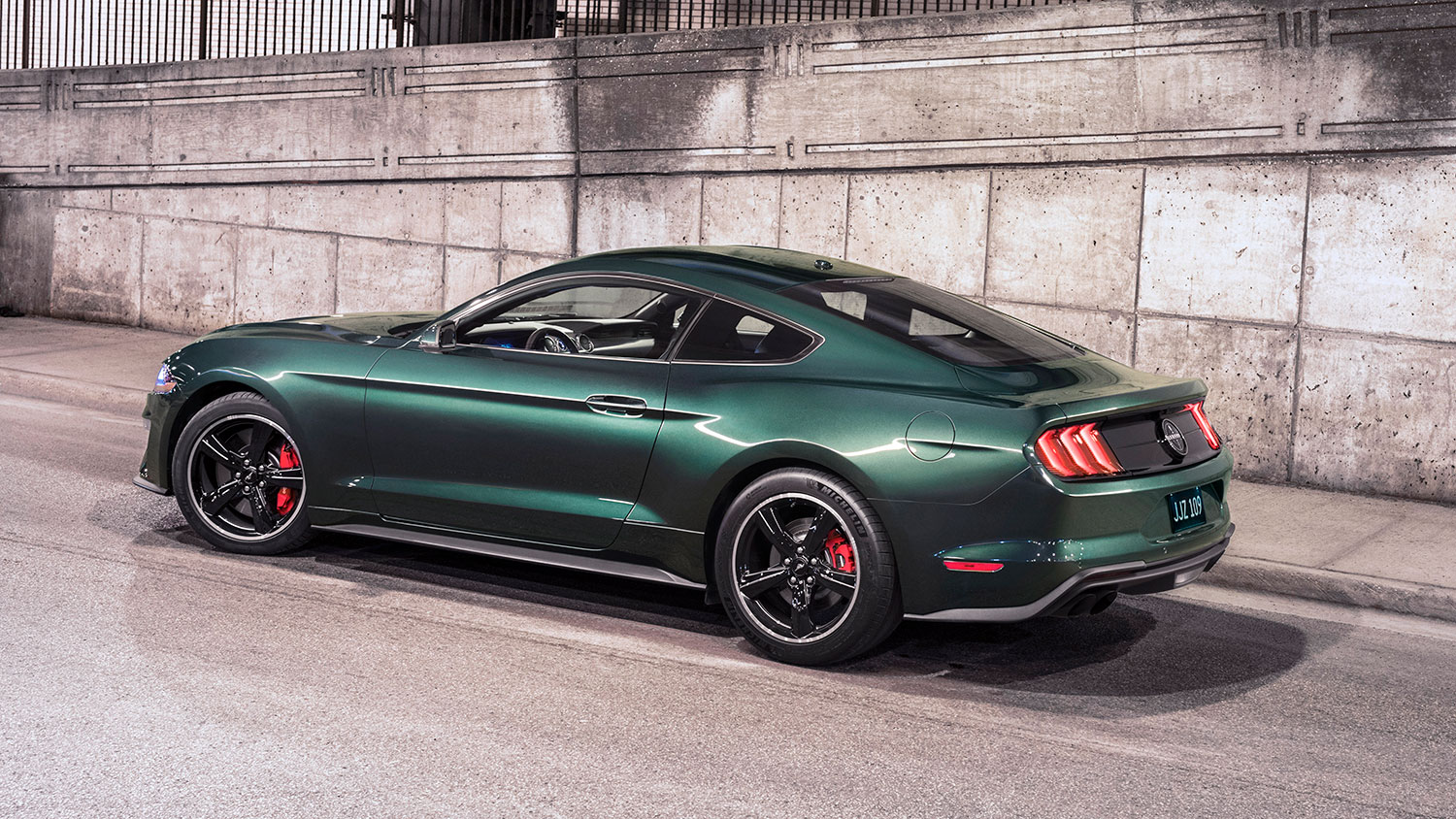Ford is rocking the 2018 Detroit Motor Show with a number of reveals, including the 2019 Ranger and Edge ST, but most the company’s highest profile reveal is the all-new Mustang Bullitt.
Aligned with the 50th anniversary of the Steve McQueen classic, Bullitt, the Mustang of the same name has been a fan favorite with each successive generation. It’s been a decade since the last model, giving Ford plenty of time to improve the muscle car’s performance and style. One thing that hasn’t changed with the 2019 model is the car’s iconic shade of dark green matched with blacked out wheels (19-inchers this time around) and a de-badged exterior. It is, in a word, badass.

Inside, the only changes include new instrument panel graphics, unique dashboard stitching, and bespoke seating. Customers who want the more aggressive Recaro sport bucket seats are welcome to them for an additional cost.
Beneath the sexy sheet metal is Ford’s 5.0-liter V8, tuned to produce “at least” 475 horsepower (15 more horses than the Mustang GT). While the standard GT is capped at 155 mph, the Bullitt is limited to a loftier 163 mph. If you can’t drive a manual transmission, this isn’t the car for you, as that’s the only available gearbox. All Bullitt Mustangs to date have featured a distinct, loud, exhaust note. The new model gets an active exhaust system with free-flow baffles that open at speed.

The rest of the Bullitt’s mechanical changes are carryovers from the Mustang GT’s options list. The Performance Pack — standard on the Bullitt — includes Brembo brakes with larger rotors, Michelin PS4 summer tires, and available Magnetic ride dampers. The Bullitt is intended to be a very quick road car, but not a track car. For this reason, the GT’s available Performance Pack 2, with stickier tires and a stiffer suspension, is not available.
Mustang Bullitts have become somewhat of a collectable, so while we don’t expect the new one to be priced as high as the Shelby GT350 ($58,045), we do anticipate a high $40,000 or low $50,000 sticker. Sales kick off this summer, so round up your funds now.
